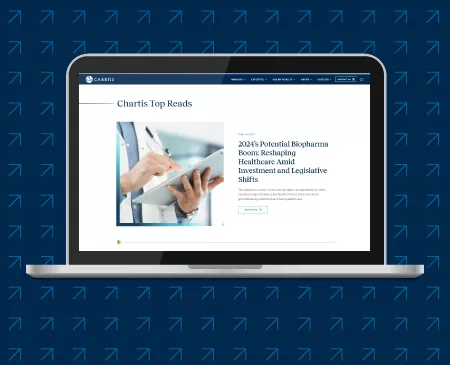Today, consumers seeking care demand that their preferences and expectations are recognized and met. This means providers must deliver timely, convenient, and affordable service and care — on the consumer’s terms. The risk of not evolving to meet these standards has never been higher. More and more consumers are willing to switch providers if their expectations aren’t met. This creates an unprecedented opportunity for growth for providers who can transform access and deliver a best-in-class consumer experience. Providers who do not transform their access experience will continuously be on the defensive, and they risk loss of market share and increased costs down the line.
Most providers have been working for years to improve access, with some efforts more successful than others. The reality is that making significant, sustainable changes to consumer access is hard. What it takes to deliver a distinctive consumer access experience is a moving target, and features that were market leading five years ago are now considered table stakes. Which begs the question — what do you need to do today to position your organization as the leader in consumer access experience for years to come?
Whether you are creating a new access strategy or refreshing one in motion, we recommend that your plan considers the following seven new imperatives for developing a winning access experience in a consumer-centric world:
01 – Understand your consumer.
There is a reason more people are talking about consumerism in healthcare these days — it matters! More than 70 percent of consumers said they would consider switching providers if they had a poor experience accessing services from their provider.1 Understanding not only what your consumers expect but what will actually be useful to them in their access experience is critical in helping you both attract new patients and retain established ones.
To build a foundational knowledge base about your consumers, you will need to develop a comprehensive set of tools and capabilities to continuously gather and evaluate consumer insights. These tools should include creating consumer personas and journey maps related to access; prototyping new tools and experiences; conducting empathy interviews using personalized, real-time surveying; and employing channel-specific (e.g., web, mobile, phone, and chat) analytic data. But gathering the data isn’t enough. You must make a point to leverage those insights to create actionable steps to enhance consumer access as you build out capabilities in this area.
02 – Know your market.
To inform your access strategy and solutions, you must seek out best practices and understand what is happening in your market. How does your approach to access stack up against your competitors, both traditional and new entrants? How quickly are your competitors getting patients into appointments? What digital solutions are they pursuing, and have consumers adopted these options? In fact, your access strategy may in turn inform the definition of your market, as your ability to offer digital and virtual care solutions can extend your market reach. A comprehensive understanding of your market will inform improvement priorities and set the stage to strengthen and defend your competitive position.
Once you understand your specific market dynamics, you can use them to shape your access priorities. For example, if you share referring providers with other organizations in your market, offering those providers an exceptionally easy and streamlined path to accessing services should be a priority to help position your organization as the first choice.
03 – Double down on your self-service options.
Increasingly, consumers are seeking digital channels to gather information and access care. To meet consumer expectations, a seamless digital experience for self-service is essential. Many consumers want to initiate and complete services on their own time — and we expect this preference only to grow stronger. Although digital channels will not be the preferred option of every consumer for every access interaction with your health system, providing consumers with a digital option is no longer nice to have but a requirement for doing access well. Pushing further and faster on this front also favorably impacts the cost of doing access well — for every successful digital engagement, you are reducing the burden on your other important front door, phone access.
04 – Create a service-specific experience.
Health systems have spent the last few years building standard approaches to consumer access. Admittedly for most, work remains on shoring up a reliable foundation (such as standardized scheduling templates, performance monitoring, and referral intake). But even with work remaining, it’s time to focus on the unique consumer journeys related to key services to create a differentiated access experience. By mapping out every part of the care process from the consumer perspective, you can identify current areas of support that might not be working well and add elements of access support that are needed.
For instance, if you provide orthopedics care in a competitive market, you may want to offer service within 48 hours and access to specialized care for more urgent cases. You may use advanced practice providers (APPs) to screen potential surgical patients and take a highly coordinated approach to imaging and physical therapy scheduling. Your cancer program may offer same-day access for a virtual visit with a care navigator; high-touch support helping consumers gather records, scans, and pathology slides; and access to specialty physicians within 72 hours.
05 – Rethink your approach to primary care services.
Health systems have been working on primary care transformation for many years, which typically includes a focus on access. Although the solutions to ensure convenient and timely access to primary care services may be well known, successful execution has been elusive for many organizations. If primary care serves as a key entry point to the rest of your health system, it’s time to shore up your approach to access. Keep in mind that may not always mean driving solutions through an existing practice-based provider model. It may be more effective to create complementary offerings outside of the practice structure.
Services such as on-demand virtual primary care and same-day access for employees can be easier to implement and just as clinically sound when done outside the walls of the traditional practice. Doing so does not absolve your existing primary care base from needing to continue to push on access — your practices should continue to build capabilities in same-day access, realizing the full value of APPs, leveraging the care team to support annual wellness visits and chronic care management, and more.
06 – Anticipate your consumer’s needs and proactively connect them with services.
Access no longer starts by waiting for the consumer to approach you — it now must include proactive outreach. Think of it as proactively offering them the access you think they’ll need. This personalized outreach must be done in a manner that is truly helpful to the consumer, so be mindful not to flood them with generic “offerings.” Instead, focus on services directly related to helping individual consumers manage their care. These helpful prompts can include health maintenance activities, identification of care gaps with a path to address them, education on diagnoses, general nurture campaigns (think flu shots), and support when transitioning between care settings. This is the best kind of demand generation. Because the services are relevant to the individual consumer, they should produce a higher follow-through rate, given the convenient and easy options to do so.
07 – Make it easy for consumers to find you.
For years, many health systems have assumed that if they improved availability and timeliness of care, demand would follow. “Build it and they will come” was a common refrain when faced with the question of whether there was sufficient demand for the capacity made available. Increasingly, health systems are recognizing the need to both understand existing demand and create new demand. For the latter, it starts with making it easy for prospective patients to find your system. Becoming searchable — and standing out from the crowd — requires optimizing the online presence and positioning of your providers, understanding how consumers conduct searches for healthcare services, and ensuring your information is integrated with payor and employer portals. For patients being referred by other providers, you need to create a streamlined process for those providers to follow. This should include options for how they refer with simple digital tools as part of the solution.
Delivering a Distinctive Consumer Access Experience
Now is the time for your organization to prioritize a comprehensive consumer access strategy. If you already have a plan in motion, enough has changed over the last couple of years to necessitate revisiting it. If you’re starting from scratch, the time is now to define a new strategy that considers these seven imperatives to set your organization up for success.
© 2024 The Chartis Group, LLC. All rights reserved. This content draws on the research and experience of Chartis consultants and other sources. It is for general information purposes only and should not be used as a substitute for consultation with professional advisors.




